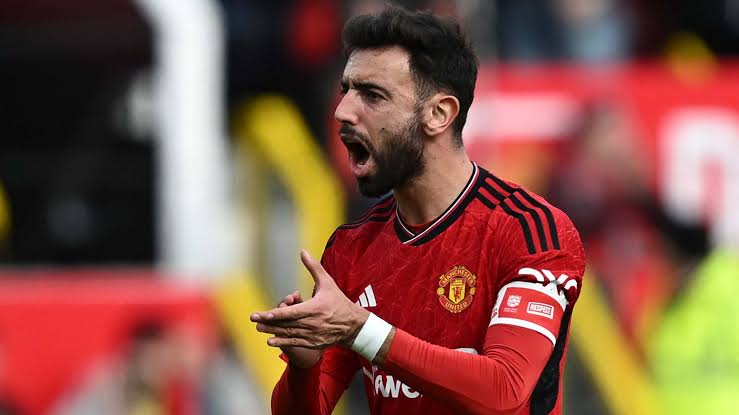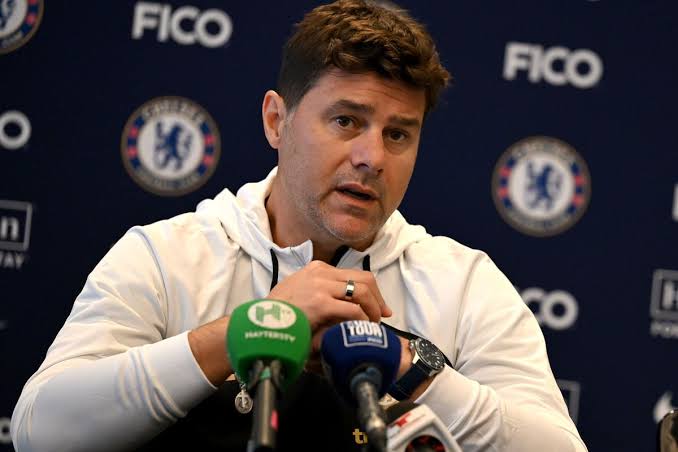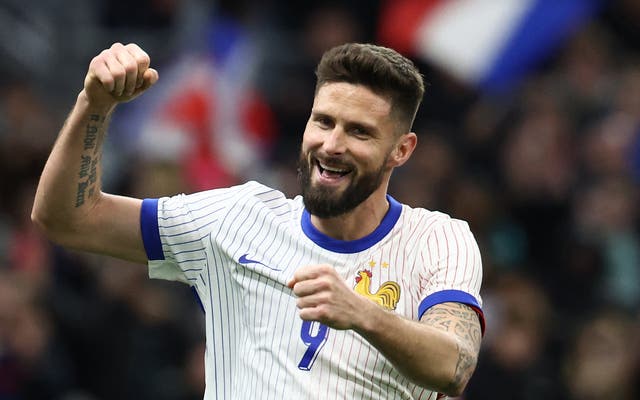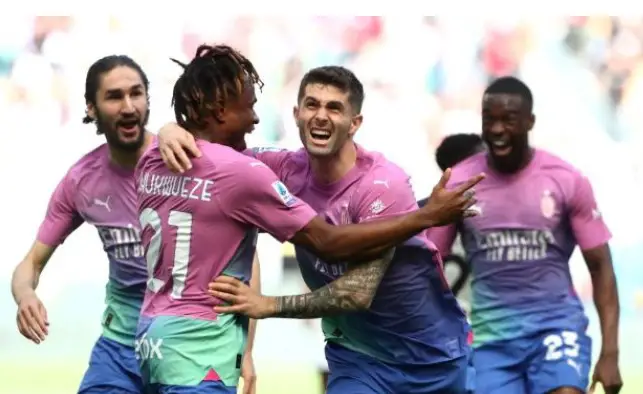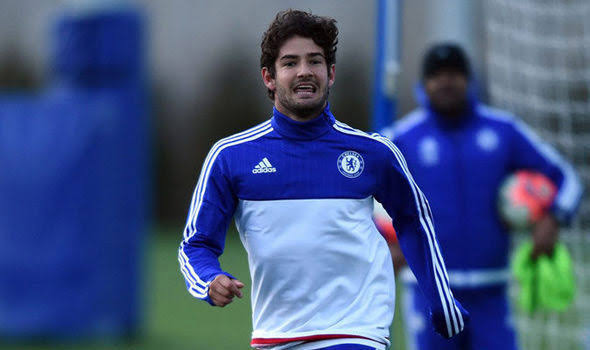Wrong Move: Chelsea had talented Kobbie Mainoo but sold him for £9m to sign Romeo Lavia

Wrong Move: Chelsea had talented Kobbie Mainoo but sold him for £9m to sign Romeo Lavia
There is an unpleasant irony in the confirmation of Romeo Lavia’s season ending before it ever began coming less than 24 hours after Kobbie Mainoo ran the show for England on his senior international debut. For Chelsea, it is a hammer blow and a demonstration of how quickly things can change for two players starting the campaign as teenage talents.
Having spent £58million to sign then-19-year-old Lavia from Southampton last summer, Mauricio Pochettino has been able to call on him for just 30 minutes of football since, and that tiny figure won’t be increased. He arrived after pre-season had ended, not taking part in much preparation work with Russell Martin ahead of an anticipated move, which led to the delayed start of his Blues career.
By the first international break there was optimism that he would be around to play come October after getting up to some sort of speed and sharpness. Setback after setback later and his day of reckoning came. Half an hour later, and his debut Blues season was over.
Lavia remains a big player for the future of Chelsea regardless of the manager and the club now have a duty of care to protect him both physically and mentally from the challenges that these sorts of issues raise. It will not be lost on many that entering the season Lavia was the much bigger prospect out of himself and Mainoo, though.
This is not totally about comparing the two, but ahead of Belgium visiting Wembley and Mainoo making his debut, it isn’t outlandish to suggest that the pair would be lining up against each other in other worlds. Chelsea will now have to dust Lavia off to go again whilst Mainoo continues to impress, almost certainly with the chance to enhance his standing now at the Euros in a few months’ time.
When it comes to teenage midfielders, they were the cream of the crop entering the season. Mainoo got his place in the Manchester United touring squad of USA and Lavia his big move to an elite side after a strong senior season at St Mary’s. An injury set Mainoo aside until November, much like Lavia, but the shift in reality since has been stark.
Mainoo has played 23 times for United now, starting all but two league games since his debut. He is now an England international having skipped age group football with the Under-21s. Lavia has been watching on through a window waiting for his time that has never come.
It was actually against Southampton in August 2022, on Lavia’s fifth league start for Saints, that the seeds were sown for a move to Stamford Bridge in the first place. At this stage Mainoo, 14 months younger, was a relative unknown to most outside of the United circuit.
Lavia dominated Chelsea’s ageing midfield – a sign of things to come – and scored his first senior goal. Left on the bench for Chelsea was Ethan Ampadu (still floating between a defender and midfielder), Carney Chukwuemeka (recently signed for £15million from Aston Villa as one of the best young talents in the country), and Billy Gilmour.
When it comes to diminutive youngsters able to spray passes as well as they can run rings around elder statesmen, Gilmour was the trailblazer of the current set of players; a British midfielder that looked to be straight out of the Pep Guardiola school of passing, controlling tempo, spinning and running. He was the sort of player not created by academies outside of mainland Europe.
Signed for £500,000 as a 15-year-old from Rangers, quoting then-Premier League champion Cesc Fabregas as his idol, and tipped for enormous things, the similarities with the Mainoo we are now seeing are plentiful. That Gilmour had been on the conscience of many for a while due to the fee paid for him shouldn’t detract from how raw he was. The little Scot was effectively Mainoo 1.0.
Chelsea had a gem: they knew it; everyone knew it. His full debut came in a Carabao Cup win over Liverpool – the reigning Champions League winners. Two and a half years later he was being sold to Brighton for £7.5million (though it could and should rise to £9million; still not a great sum).
The loss to Southampton and Lavia on that night on the south coast, and Tuchel’s ignorance towards him, was the end of his stay. “It is [a headache] and it’s normally the area I would love to have a headache about who plays and who is on the bench,” the German head coach said of his midfield options that night.
“This is normally the area that I thought we would have five players that could all play for us and have Carney [Chukwuemeka] on top as an option as a young player. The headache before the season was whether we had too many players there, but it comes to the fifth game and maybe we only have two left with experience in this position and Kova [Mateo Kovacic] from the bench because he is not ready to play full matches at Premier League level as he only had a week after training after his injury.
“It’s a strange situation and a situation we don’t like. I don’t know why we are in this situation actually. It’s like this and we will have something to think about [over the team selection], or maybe not because it’s so obvious who we have left.”
Tuchel had already made Gilmour an outcast on a disastrous tour of America, sending him away with a development squad. The writing was on the wall for a while. A warning for Mainoo perhaps? But for Chelsea it was just the climax in a comical case of mismanagement.
“We had high hopes and he played for us in the first half-a-year when I was at Chelsea, played some important matches for us and looked for a new challenge that did not go so well for him with Norwich,” Tuchel later said of Gilmour’s exit.
“We expected more, he expected more so it was like, without pointing a finger, but it is difficult also for him and for us to not succeed, to not play at Norwich, to be relegated and then suddenly be a central midfielder for Chelsea and competing for top four and for every title.
“There’s a huge step in between so we were looking. The ideal solution would have been maybe that he goes again on loan as the concurrence is huge for us in central midfield and we felt like he is not the age where he can live again with five or seven or eight matches during a whole season to fulfil his own potential so ideally it would have been another loan. Billy did not want to go on loan, it was a no-go for him so in the end we agreed to a sale.”
Lavia, just over two years Gilmour’s junior, went on to play over 2,000 minutes for Southampton in the league alone last year whilst Chelsea’s options crawled to the close of play battered, bruised, and largely already on the way out. It was comfortably more than Gilmour, though he had to deal with Roberto De Zerbi replacing Graham Potter just a few days after he moved.
Few around Chelsea were missing Gilmour after a quiet first 12 months in East Sussex, but he is now a staple for the Seagulls and until last month was playing European football, something his former club aren’t. He finished above Chelsea last year with Brighton and is on course to do so again.
Although different players entirely, Lavia essentially replaced Gilmour as the kid off the block in midfield who could do a bit of everything. Physically he’s more imposing but the pair, again, have their similarities. Lavia at 18 had proven his worth to a Premier League side more than Gilmour, but that says more about Chelsea’s pathway than it does the player.
United, taking full advantage of the player on their hands in Mainoo, will not be looking to imitate the same mistakes. After all, the Red Devils were after Lavia in the summer, as were Liverpool and Arsenal. He is an immense talent that garnered interest and a price tag worthy of his potential. But it’s hard not to see how Mainoo would have co-existed at Old Trafford, or at least developed at this rate if Lavia was around.
In a world of hypotheticals, Chelsea can watch Mainoo strutting about and wonder just why they have ended up so far removed now from two players that could have been doing the same thing in blue instead.

